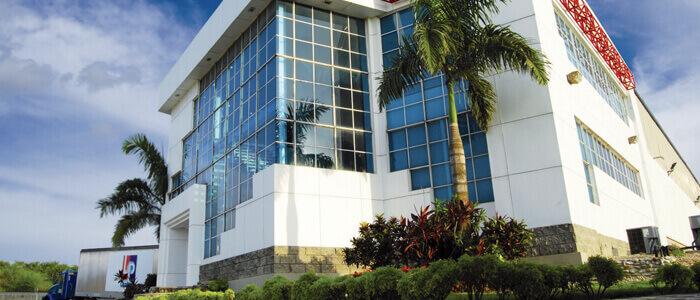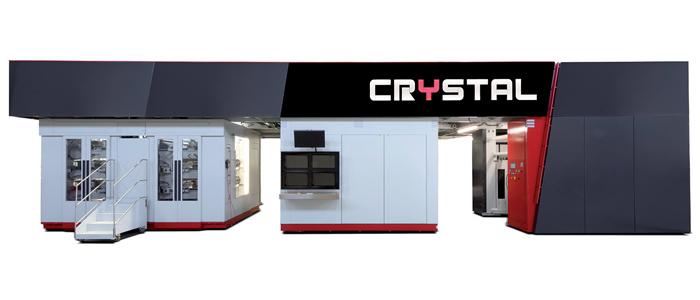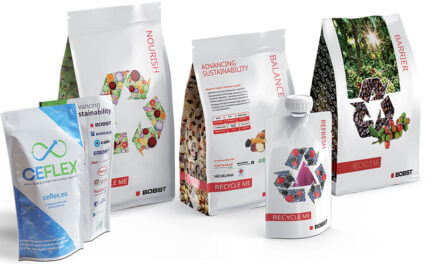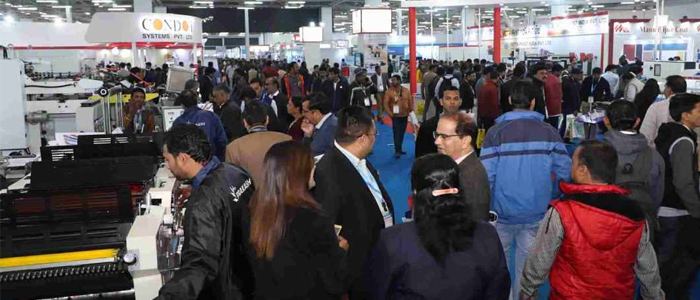How to draw the maximum benefit from a color reproduction in extended gamut? By standardising the work phases, from preprint to validation, and reorganising the company consequently. As done by Litoplas, that today prints half of its output in ECG, and aims at doubling that.
Strategically located between the two Americas, on the Colombian coast, Litoplas is a proactive and growing converter, with 400 employees and a capacity of over 350 million square meters, half of which is printed in ECG. In cooperation with Bobst, that in November 2015 already provided the first extended gamut flexo (Bobst 20six), Litoplas has hence helped pioneer this technology, not only as a beta-tester but also and above all as an implementer of a printing system that impacts the entire company organization. Luis Mora, Market and Innovation Director of the company, guest and testimonial at the last conference organized by Bobst to present the new 20SEVEN ECG, explains why he focused on this technology, how he inserted it in the company and with what results.

Luis Mora, Market and Innovation Director Litoplas
Dr. Mora, being a trailblazer ensures important competitive advantages but it is also challenging and risky. When did you opt for ECG? And why?
The idea came actually from a long-time very forward thinking customer. ECG has been in the market for so many years -and seeing that some brands are actually printing in ECG in other places- they placed us the doubt around why can’t we develop this printing technology. We´ve been investing so much in knowledge and technology past years that it wouldn’t make sense that we were incapable of developing it.So we took a look again at ECG early 2014, saw that all the benefits made sense and started a project for this.
Entering into the merits of the various aspects, what actually does the higher quality and efficiency promised by this color reproduction system consist of? And how has it affected the economy of Litoplas processings?
The higher quality aspect of ECG comes from two factor: having a wider color gamut and having more pure and intense inks. When we explain the reason why a wider color gamut usually involves having better print quality we usually compare it with televisions. A television is able to reproduce a limited amount of colors that the human eye can capture, and by every technological leap they get better at it and a visual quality boost is made. Since naturally we can’t add plasma nor led technology on our packages, we choose to develop three additional strategically selected colors to widen up the printing color gamut as much as possible using very intense inks. This gives us a broader color palette to work with when converting artworks in prepress. The big efficiencies come from lower press downtime due to the fact that ink changing and color matching doesn’t takes as much as conventional printing. In the past we had to clean the machine to change from color A to B. Very similar when our food producing customers do when they change from flavour A to B; it would be astonishing for them if they were capable of changing flavors without an intense cleaning. In the color matching point of view: we use the same 7 colors. Each time you practice on the same thing, you get better at it. You get better on knowing the best viscosity, temperature, press parameters for optimizing your process and you also get better on having them can capture, and by every technological leap they get better at it and a visual quality boost is made. Since naturally we can’t add plasma nor led technology on our packages, we choose to develop three additional strategically selected colors to widen up the printing color gamut as much as possible using very intense inks. This gives us a broader color palette to work with when converting artworks in prepress. The big efficiencies come from lower press downtime due to the fact that ink changing and color matching doesn’t takes as much as conventional printing. In the past we had to clean the machine to change from color A to B. Very similar when our food producing customers do when they change from flavour A to B; it would be astonishing for them if they were capable of changing flavors without an intense cleaning. In the color matching point of view: we use the same 7 colors. Each time you practice on the same thing, you get better at it. You get better on knowing the best viscosity, temperature, press parameters for optimizing your process and you also get better on having them in specification. So if all parameters are in spec (anilox, plate, stickyback, press maintenance, register, viscosity, pressure, etc) then color matching shouldn’t be something to worry about.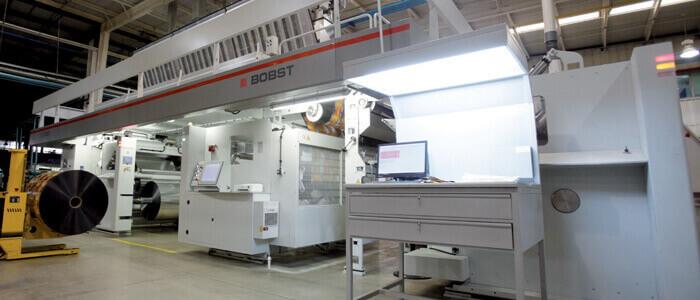 What are the most critical aspects of ECG?
What are the most critical aspects of ECG?
Prepress color management, quantitative process control and moving customers to see the final outcome. The last part has been the most challenging for us.
How did you deal with them?
For prepress we have developed an entire complex color management workflow able to guarantee harmonization between the color proof and the actual press prints. It required hard work both for us and our suppliers. For process control we applied a 6sigma strategy were we now use statistical process control. This makes the process predictable. For aligning customers to final outcome we are still working on it. ECG have its pros and cons as any other technology, but the cons are small details that we believe a final consumer won’t be able to notice. We’ve actually made live testings and consumers usually notice a bunch of other stuff rather than the small “cons” that ECG has.
You stated that with ECG a flexographic machine becomes similar to a digital one. What do you mean by that?
It’s the usual pitch when first hearing about ECG. Digital printing – such as your home printer- is a plug and play technology.You end up pressing a single botton and a print is made. Flexo implementation is much complex than this. Even though the final results of ECG implementation make your flexo press seem as a home digital printer in the front-end, in the back-end is not really that way. You will need constant process improvement and operational hard work to get each passing day closer to that utopical view of printing.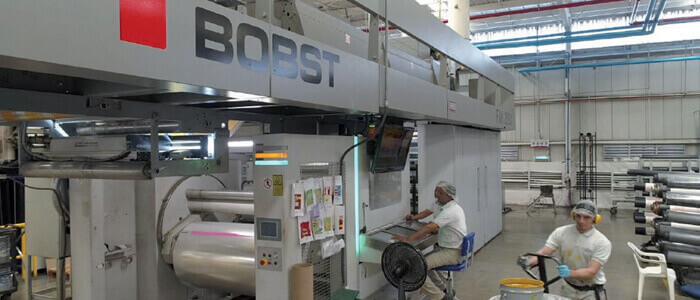 What changes did you have to implement in the company, at an organizational and equipment level? And in terms of general work culture?
What changes did you have to implement in the company, at an organizational and equipment level? And in terms of general work culture?
On an organizational standpoint we empowered our people by developing more specialized responsabilities on a coordination level, and our operators on giving them the best education and higher autonomy on their labors. The fact that ECG printing is more operationally challenging than conventional printing requires strict process control. Better equipment helps having process variables perform more stable. We are very happy with our Bobst presses´ performance on this matter. Once six sigma results begin to arise, everyone realizes that quantitative process control actually works and data driven culture is interiorized by its own.
A particularly delicate aspect concerns the heptachrome controls. How did you manage them? And with what results?
It all gets on to how we can better reproduce the fingerprinting done on the first step. We developed a system capable of constantly validating fingerprint data repeatability and we introduced it in our process quality control. We can monitor this data and continually improve our process. The results are great. We have a process capacity of over a 4sigma. This means that there’s less than a 0,6% chance to have a sample exactly on the specification border value. In Bielefeld, where you gave an account of your experience to Bobst’s guests, you began by saying that the project was carried out in cooperation with a network of suppliers based within a radius of 200 kilometres from your home in Barranquilla. Why? What products and services were affected? With what outcome?
In Bielefeld, where you gave an account of your experience to Bobst’s guests, you began by saying that the project was carried out in cooperation with a network of suppliers based within a radius of 200 kilometres from your home in Barranquilla. Why? What products and services were affected? With what outcome?
We believe that individual work doesn’t leverages long term productivity. Industry as fast growing as it is now makes inviable to show results working by your own. We like to keep customers and suppliers close and treat them as partners. This way we strive together to reach common goals that are beneficial to all of us. ECG requires hard work to get to know your press better. Choosing the correct parameters are paramount for a successful operation. Working together with suppliers and customers make things work more fluently, and once the implementation has been successfully done then it should mean great business for all stakeholders.
What is the overall balance of this initiative to date? And future projects?
We have currently half of our volume in ECG printing. We are working on having 60-80% of the other half done by next year. It doesn’t makes sense to us to continue with conventional printing. We are constantly improving our ECG capabilities. We want lower downtimes, wider gamut, better process predictability, and better color proofs. We are very happy with what we have now and it works fantastically, but we believe we can do better and we are striving for it. We are about to release our second version of ECG printing this year were we are planning to doubly increase our color gamut together with other benefits. Our customers will be very happy to use this technology on their shelves to differentiate from their competitors and bring higher value to their brands.
[su_box title=”Who is Litoplas” box_color=”#e6000a” radius=”5″]
 Litoplas is a flexible packaging converting company located in Barranquilla, Colombia with an annual capacity of over 350 million squared meters.Current markets attended are snacks, cookies & crackers, beverages, coffee, condiments, confectionary, dried food, personal & home care and pet foods.
Litoplas is a flexible packaging converting company located in Barranquilla, Colombia with an annual capacity of over 350 million squared meters.Current markets attended are snacks, cookies & crackers, beverages, coffee, condiments, confectionary, dried food, personal & home care and pet foods.
[/su_box]

